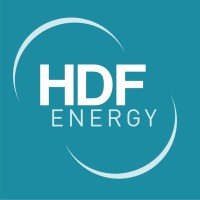Gaussin presents AGV H2 for ports; Honda installs FC power station
Research shows that ports are ideal for hydrogen-powered transport trucks and container handling equipment.

Gaussin has launched the world’s first hydrogen-powered fuel-cell Automated Guided Vehicles (AGV H2) for seaports.
These new vehicles complement Gaussin’s range of hydrogen-powered vehicles following the hydrogen-powered fuel cell ATM and APM release. The AGV can be autonomously driven in infra-structureless and mixed traffic environments.
It will help port operators switch to zero-emission immediately and provide longer operating hours, shorter and less frequent refuelling, and quiet and efficient transportation.
Ports traditionally rely on diesel-powered trucks, and tractors operating in a cluster environment are involved in moving cargo to and from ships.
With hydrogen production costs dropping more than 50% since 2015, hydrogen-powered fuel cell vehicles are now a viable solution for port operators to meet operational efficiency and green targets.
With a payload of 65 tonnes, it has 45kW fuel with a battery capacity of 60 kWh. The truck has a maximum speed of 25 km/h with an autonomy of 15 hours. Its H2 tank capacity is 20kg @350bar.
Honda to install a stationary fuel cell power station
Honda plans to install a stationary fuel cell power station on its corporate campus in Torrance, California, by early 2023.
The station will be a proof of concept for the future commercialisation of a power generation unit as a zero-emission backup power source for facilities such as data centres.
The proof of concept FC power station will begin testing on the American Honda corporate campus in Torrance, California, in early 2023.
Honda developed a stationary fuel cell power station capable of providing zero-emission backup power.
Honda’s proof of concept fuel cell power station will utilise fuel cell components from Honda Clarity Fuel Cell vehicles in a flexible, four-quad parallel stationary fuel cell power generation system capable of generating up to 1152kW-DC/1MW-AC from an inverter.
A unique advantage of the four-quad design is the flexibility to change the layout of the four individual fuel cell units to suit the installation environment, accommodating a cuboid, L-shape, Z shape or other packaging requirements.
This will enable Honda to advance its know-how in the power supply area and supply chain development, grid connection access, construction specifications, AC/DC connection requirements, and other critical areas.
